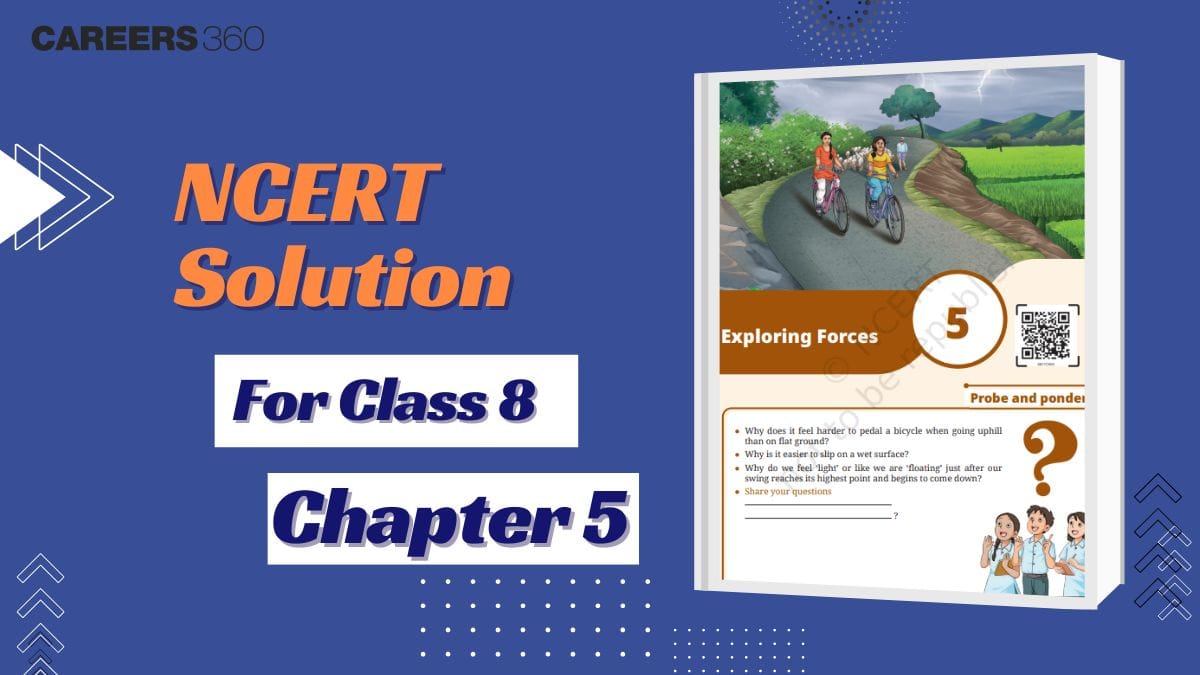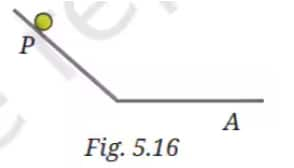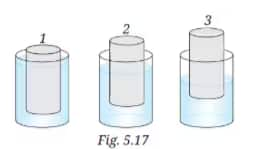NCERT Solutions for Class 8 Science Chapter 5 - Exploring Forces
When you push a heavy door or a cart with groceries on it, have you ever tried that? Your push is referred to as force, which we employ in daily activities without being aware of it. This is a very basic concept of physics, which is explained in a systematic manner in the NCERT Class 8 Science Chapter 5, Exploring Forces. It will familiarise students with the various categories of forces, including muscular force, friction force, magnetic force, electrostatic force and pressure, as well as the impacts they have on the movement, shape and condition of items.
This Story also Contains
- NCERT Solutions For Class 8 Science Chapter 5 - PDF Download
- NCERT Solutions for Class 8 Science Chapter 5: Solved Exercise Questions
- NCERT Solution for Class 8 Exploring Forces 5 Overview
- Class 8 Science Chapter 5 Exploring Forces 5 Topics
- Approach to solve the questions of Class 8 Science Chapter 5
- Chapter-wise NCERT Solutions of Class 8 Science

The chapter is highly crucial in the development of excellent conceptual knowledge, which becomes the basis of advanced Physics in CBSE Class 9-12 and in competitive exams such as JEE, NEET and Olympiads. It helps to think scientifically with the explanation of the forces involved in any interaction, such as riding a bike or writing with a pen. The NCERT Solutions give a step-by-step explanation of the questions written in the NCERT Class 8 Science Chapter 5 textbook in a clear manner. They give examples, definitions, diagrams, and conceptual arguments, numerical examples, and real-life examples to make tough topics easy. NCERT class 8 solutions will not only help in exam preparation, but they will also be of help in cultivating logical problem-solving skills.
NCERT Solutions For Class 8 Science Chapter 5 - PDF Download
Get all NCERT solutions for Class 8 Science Chapter 5 Exploring Forces in one easy-to-read PDF. This includes complete questions and answers along with clear explanations and examples.
NCERT Solutions for Class 8 Science Chapter 5: Solved Exercise Questions
Here you will find the complete NCERT class 8 science chapter 5 question and answer of the exercise, which are prepared by a subject expert in easy language.
Q1: Match items in Column A with the items in Column B.
|
Column A (Types of force) |
Column B (Example) | ||
|
(i) |
Muscular force |
(a) |
A cricket ball stopping on its own just before touching the boundary line |
|
(ii) |
Magnetic force |
(b) |
A child lifting a school bag |
|
(iii) |
Frictional force |
(c) |
A fruit falling from a tree |
|
(iv) |
Gravitational force |
(d) |
Balloon rubbed on woollen cloth attracting hair strands |
|
(v) |
Electrostatic force |
(e) |
A compass needle pointing North |
Answer:
|
Column A (Types of force) |
Column B (Example) | |
|
(i) |
Muscular force |
(b) A child lifting a school bag |
|
(ii) |
Magnetic force |
(e) A compass needle pointing North |
|
(iii) |
Frictional force |
(a) A cricket ball stopping on its own just before touching the boundary line |
|
(iv) |
Gravitational force |
(c) A fruit falling from a tree |
|
(v) |
Electrostatic force |
(d) Balloon rubbed on woollen cloth, attracting hair strands |
Q2: State whether the following statements are True or False.
(i) A force is always required to change the speed of motion of an object.
(ii) Due to friction, the speed of the ball rolling on a flat ground increases.
(iii) There is no force between two charged objects placed at a small distance apart.
Answer:
(i) True.
To increase, decrease or change the direction of speed, a force must act.
(ii) False.
Friction always acts in the opposite direction of motion, so it decreases speed, not increases it.
(iii) False.
There is an electrostatic force (repulsion or attraction) between two charged objects, even at a distance.
Q3: Two balloons rubbed with a woollen cloth are brought near each other. What would happen and why?
Answer:
When both balloons are rubbed with a wool cloth, they gain similar charges (typically negative). When two similarly charged objects are brought near each other, they repel each other.
Reason:
Rubbing the balloons transfers electrons from the wool to the balloons. Both develop the same type of charge. Like charges repel each other, so the balloons move away from each other.
Q4: When you drop a coin in a glass of water, it sinks, but when you place a bigger wooden block in water, it floats. Explain.
Answer:
The coin sinks since the gravitational force exerted on the coin is more than the buoyant force (upthrust) exerted by water.
The forces of buoyancy that exist on the wooden block (on top of the water) are equal or greater than the weight (gravitational pull) of the wooden block and thus the block up-floats or floats.
Explanation in terms of density:
When the density of an object is greater than that of water (coin), then it sinks.
When the density of an object is less than that of water (wood), it floats- whether it is bigger in size or not.
Q5: If a ball is thrown upwards, it slows down, stops momentarily, and then falls back to the ground. Name the forces acting on the ball and specify their directions. (i) During its upward motion (ii) During its downward motion (iii) At its topmost position
Answer:
(i) During its upward motion:
The gravitational force acts downward (towards Earth), while the ball is moving upward. Gravitational force slows the ball.
(ii) During its downward motion:
The gravitational force acts downward (same direction as motion), pulling the ball down and increasing its speed.
(iii) At its topmost position:
The ball’s velocity is zero at the maximum height. The only force acting is gravity, which is still acting downwards and causes the ball to start falling back down.
Q6: A ball is released from the point P and moves along an inclined plane and then along a horizontal surface as shown in the Fig. 5.16. It comes to stop at the point A on the horizontal surface. Think of a way so that when the ball is released from the same point P, it stops (i) before the point A (ii) after crossing the point A

Answer:
(i) To make the ball stop before point A:
Increase friction on the surface before point A (e.g., roughen the surface or place a cloth/rubber strip).
(ii) To make the ball stop after point A:
Decrease friction by smoothing the surface, using oil or polishing it so the ball continues rolling for a longer distance.
Explanation:
Friction opposes the motion. More friction, the ball stops sooner; less friction, it goes further.
Q7: Why do we sometimes slip on smooth surfaces like ice or polished floors? Explain.
Answer:
The friction is nearly nonexistent on smooth surfaces such as ice or floors.
Friction assists our feet in keeping a hold of the ground. When the friction is low, our feet or shoes are unable to hold a surface and thus we slip readily.
Q8: Is any force being applied to an object in a non-uniform motion?
Answer:
Yes.
If an object is moving non-uniformly (changing speed or direction), it is under the influence of a force.
Example:
A car, accelerating, decelerating, or turning, is always under the influence of some applied force (engine brakes or steering).
Q9: The weight of an object on the Moon becomes one-sixth of its weight on Earth. What causes this change? Does the mass of the object also become one-sixth of its mass on Earth?
Answer:
The weight difference is due to the difference in the gravitational pull-the Moon’s gravity is almost 1/6th of that of Earth, so the object will weigh less there.
Mass does not change.
The quantity of matter in an object is called mass and is always the same at every place.
Q10: Three objects 1, 2, and 3 of the same size and shape but made of different materials are placed in the water. They dip to different depths as shown in Fig. 5.17. If the weights of the three objects 1, 2, and 3 are W1 , W2 , and W3 , respectively, then

(i) W1 = W2 = W3
(ii) W1 > W2 > W3
(iii) W2 > W3 > W1
(iv) W3 > W1 > W2
Answer:
The object, which sinks in deepest, is the heaviest one; that which sinks just below the surface is the lightest. According to the diagram, object 1 sinks the most, and object 3 is the one that floats much up, so the correct answer is:
(ii) W1 > W2 > W3
NCERT Solution for Class 8 Exploring Forces 5 Overview
The chapter discusses force - a push or pull on objects and how it changes the speed, direction, or shape of objects. Contact forces, such as muscular force and friction and non-contact forces, such as magnetic, electrostatic, and gravitational forces, are discussed. Concepts of weight and mass and their measurement using a spring balance are also covered. Class 8 chapter 5 Exploring Forces then introduces buoyant force or upthrust and explains why certain objects float in water while others sink. The chapter relates scientific concepts to students' everyday lives with examples, activities, and fun experiments.
Class 8 Science Chapter 5 Exploring Forces 5 Topics
Chapter 5: Exploring Forces in Class 8 Science will enable students to learn how the forces influence the movement and shape of objects. It presents not only the most crucial aspects, such as the types of forces, the effect of force, but also mentions such common examples as pushing, pulling, and friction, which makes the theme close to real life.
5.1 What Is a Force?
5.2 What Can a Force Do to the Bodies on Which It Is Applied?
5.3 Are Forces an Interaction Between Two or More Objects?
5.4 What Are the Different Types of Forces?
5.4.1 Contact forces
5.4.2 Non-contact forces
5.5 Weight and Its Measurement
5.6 Floating and Sinking
Approach to solve the questions of Class 8 Science Chapter 5
The most effective way to solve the problems in the Class 8 Science Chapter 5 Exploring Forces is to ensure that the fundamental concepts of the said chapter are well understood, including types of forces (contact and non-contact), effects of force, and how force may alter the state of motion or form of an object. Emphasis must also be given to practical problems such as those that deal with friction, muscular force, magnetic force and gravitational force. the answering questions, refer back to everyday experiences (e.g., how a ball can slow down because of friction). Diagrams should be used when necessary, and scientific terminology must be used in a correct manner. Studying application and conceptual questions will help reinforce knowledge and accuracy during exams.
Chapter-wise NCERT Solutions of Class 8 Science
Click on the chapterwise link below to access the complete NCERT class 8 Science question answers, which are explained in very easy language. These chapters are the foundation chapters of classes 10 and above.
Frequently Asked Questions (FAQs)
Knowledge of forces will make it easier to understand why and how objects move and interact, and this is critical in science and everyday life.
Forces can be observed within everyday behaviours such as walking, opening a door, riding a bicycle or a falling object.
No, there are forces that act without contacting like the gravity, magnetic, and electrostatic forces.
The concepts in this chapter will be used to form a base on further topics about physics, engineering, and mechanics.
Popular Questions
Courses After 12th
Applications for Admissions are open.
As per latest syllabus. Physics formulas, equations, & laws of class 11 & 12th chapters
JEE Main Important Chemistry formulas
Get nowAs per latest syllabus. Chemistry formulas, equations, & laws of class 11 & 12th chapters
JEE Main high scoring chapters and topics
Get nowAs per latest 2024 syllabus. Study 40% syllabus and score upto 100% marks in JEE
JEE Main Important Mathematics Formulas
Get nowAs per latest syllabus. Maths formulas, equations, & theorems of class 11 & 12th chapters
